https://files.peakd.com/file/peakd-hive/minismallholding/EpA3w6ydVNKoUc7u4BoizFC6HnueA3j7B4ginB72dNC8PJjRiUaKh6CDJdagyo18yPr.jpg
Something I never realised until we came to Australia was that chilli plants can be perennial as long as winter doesn't get too cold for them. The ideal climate is tropical or subtropical, which is unfortunately not the South Australian climate. Here it's arid and in some areas it will drop to light freezing in winter. However, in the region I'm in frosts are rare and brief if we see them, so I've been trying to see if we can get our chilli and capsicum plants to survive the winters.
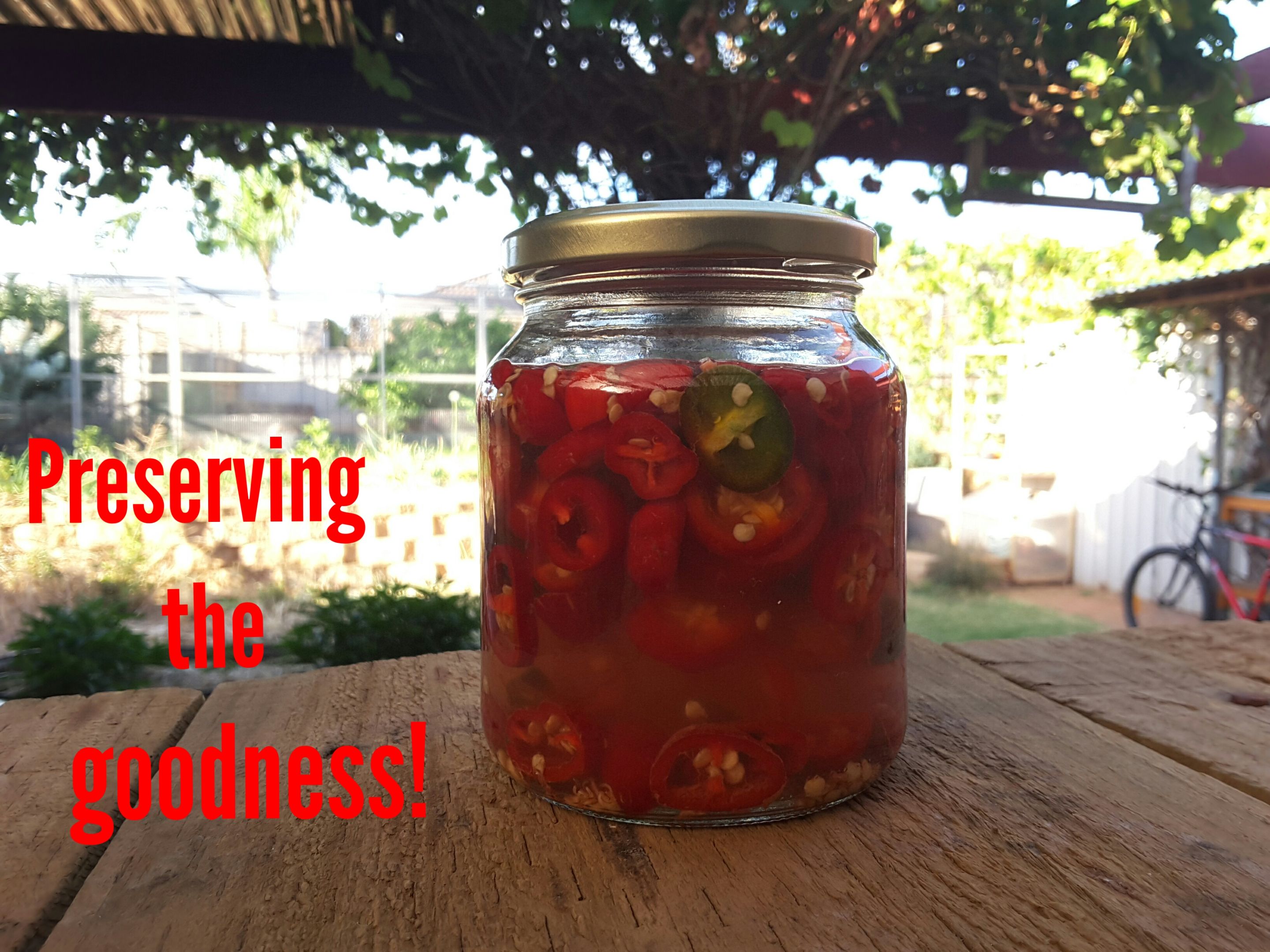
Until now, some of them have scraped through a winter before, but never really managed to thrive the next season. This summer we had two plants pull through, one was a jalapeno, which is a milder chilli and I wonder if that has anything to do with it. I've heard that the heat of the chili is to protect against fungal infections in the hot, moist climates of the tropics, so perhaps the lesser heat means they can tolerate a cooler, drier climate. I'm not sure, though, because this wouldn't explain our capsicum plant dying. *What probably would explain that is me being late to get it out of the pot and into the ground so it didn't have chance to establish itself well before winter.*
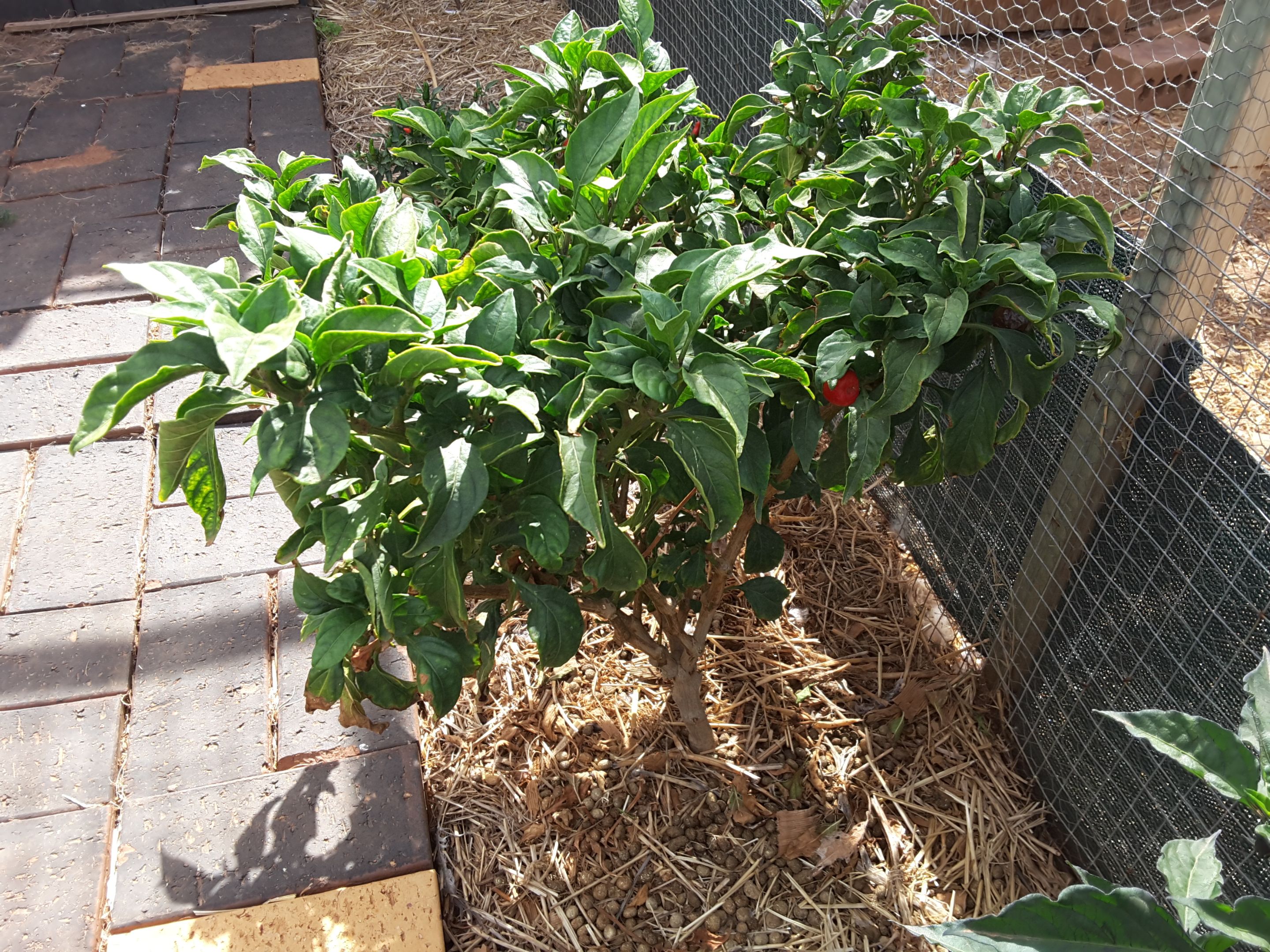
This jalapeno plant actually looks healthier in the photo than in reality.
While the jalapeno has been producing, the plant itself hasn't looked particularly healthy, with the leaves being blotched with yellow and the fruits not being very big or nice looking. Initially I thought it was just because it was recovering from the winter, but it stayed that way until recently and now as we're heading into autumn again the new leaves are finally growing green. I keep trying to keep the nutrients up, but our soil is also on the alkaline side, so might not be allowing for easy nutrient uptake.
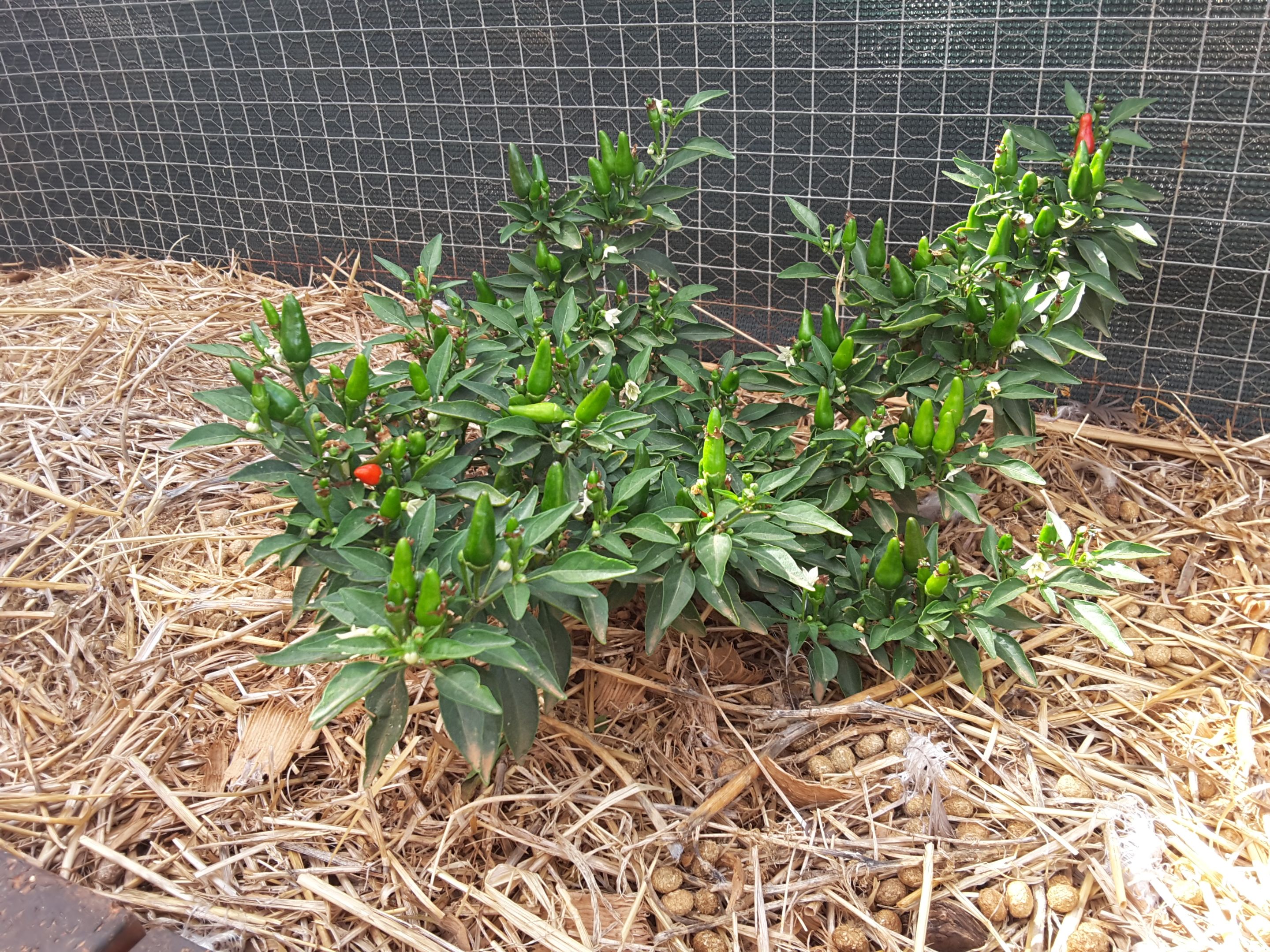
The other plant was a pot luck. I had some old chilli seeds and didn't know what they were, so I chucked them in the ground in a bare spot. A few came up, but the soil wasn't great there, so I lost a few. I moved a couple to the final position I wanted them and one got a bit better established before winter, but didn't produced much. Perhaps its hard start in life prepared it for weathering the winter or perhaps it was sheltered from the worst of the cold by the copious amounts of nettles hiding it over winter. Either way, it pulled through and seems to be a cross between bird eye and Thai chilli.
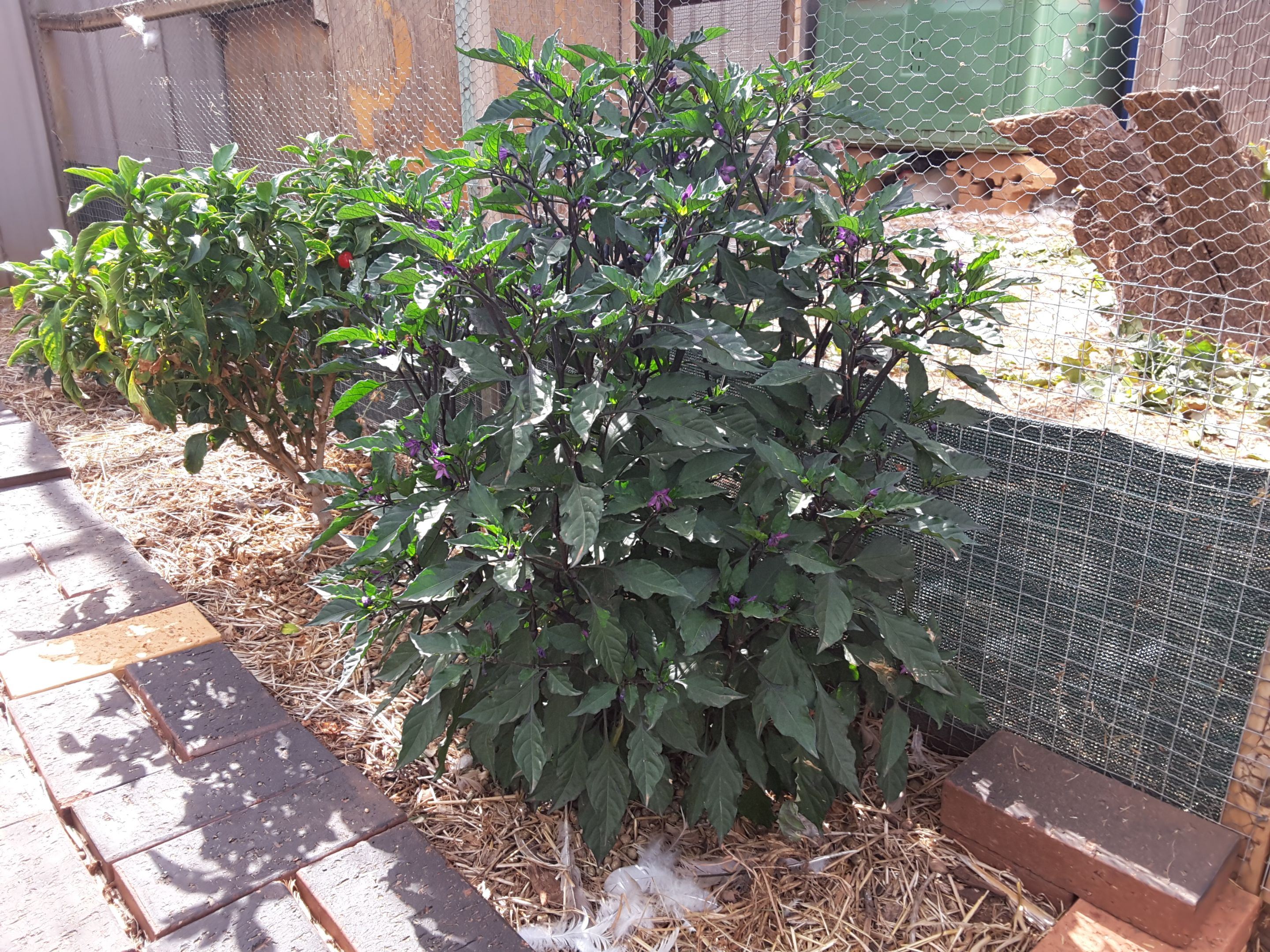
Maui purple
My absolute favourite chilli plant, the Maui Purple, seemed to be about to make it through, but succumbed towards the end of winter. I had some seeds from it, though, and got them going in the spring. I had enough plants as backups, for if the transplant failed, that I could give some away and the new plant has grown even better than its parent. However, It's now autumn and I'm only just starting to get fruit. The chillies start out deep purple, almost black, before turning green then red.

Maui purple
The two plants that survived the winter had a head start with production so I've had more chillies than I knew what you do with. I love fresh chillies on things, but there's only so much you can use each meal. So how to preserve for winter use? I often dry the chillies out and put them in a pepper mill to grind over food or use in cooking. The small ones don't even need much preparation. Just remove the green stem and leave them on a plate or tray to dry. The larger chillies tend to go mouldy if you do this, so I'll slice them before drying.

Previously I have pickled them in vinegar before, which is a quick way to preserve as pickles, but I wanted to do them as a ferment for the probiotics. For various reasons I've been wanting to get my hubby eating probiotic foods, but he doesn't like yoghurt, might be lactose intolerant anyway, and won't touch sauerkraut. So the only thing I could think of to ferment that I already know he enjoyed pickled was chillies. Cue my first chilli fermenting trial. The recipe I got for making the brine was 1 cup of filtered water to one tablespoon of salt. Other recipes say a ratio of 2 cups to 1 tablespoon. I don't remember which I chose now, but second time around I did the 1 to 1 ratio.
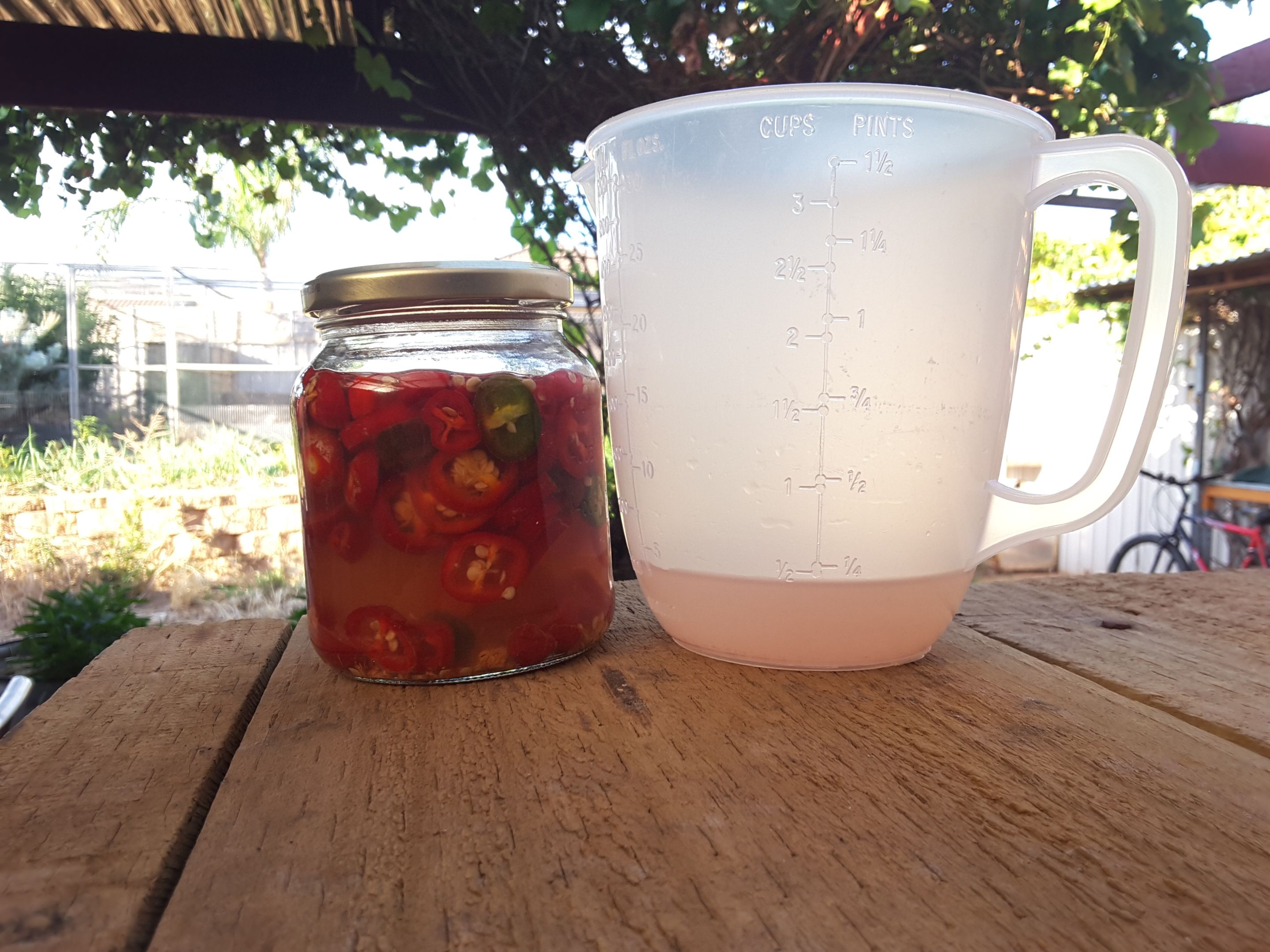
First time around I made the mistake of using a jar where I couldn't get anything in to hold the chillies under the brine solution. I thought I could avoid the exposed ones going mouldy by mixing them daily, but I'm not sure if this affected the fermentation negatively or slowed it. It's an anaerobic process, so ideally they shouldn't be getting any oxygen at all in there. Either way, they were a hit and I moved them to the fridge after 5 days to stop the mould happening. Second time around I used a wider jar and could then fit in a narrower one to hold the chilies under the brine, so they had a good ferment for six days and seemed to process a bit better. Finally I'm getting probiotics into hubby and he's enjoying them! Chillies aren't always the easiest harvest to give away either. So it's good to know they'll get used and enjoyed.

Originally posted here: https://hive.blog/hive-120078/@minismallholding/on-chillies-and-ferments







No comments:
Post a Comment